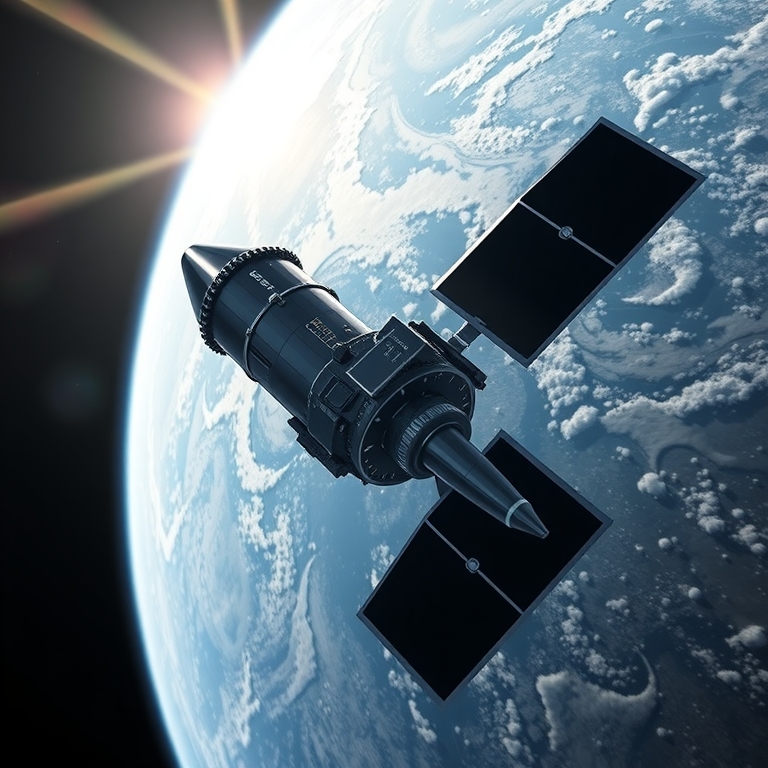In a remarkable demonstration of technological prowess and innovation, SpaceX’s Dragon spacecraft is charting a bold new course in the realm of commercial space exploration. This pioneering vehicle has not only redefined the possibilities of space travel but has also opened up a frontier that, until recently, seemed confined to the annals of science fiction. The impact of Dragon’s achievements resonates far beyond its engineering marvels, marking a transformative moment in the commercial space sector and setting the stage for an era where private enterprise plays a pivotal role in humanity’s exploration beyond Earth.
SpaceX, the brainchild of entrepreneur Elon Musk, launched the Dragon spacecraft with a vision that transcends the traditional boundaries of space exploration. From its inception, Dragon was designed to be a versatile workhorse capable of carrying cargo and humans to low Earth orbit and beyond. This dual-purpose capability has been a significant factor in its success, allowing it to serve both NASA’s requirements for ferrying astronauts to the International Space Station (ISS) and the burgeoning demand for private space missions.
The journey of the Dragon spacecraft has been nothing short of extraordinary. With its sleek design and advanced technology, it has completed numerous missions to the ISS, delivering essential supplies and returning scientific experiments to Earth. Each mission has built upon the last, refining and enhancing the spacecraft’s performance. The culmination of these efforts came in May 2020, when Dragon became the first privately-owned spacecraft to transport astronauts to the ISS, a historic milestone that marked the dawn of a new era in space travel.
This achievement was not merely technical; it was emblematic of a broader shift in the space industry. For decades, space exploration was the exclusive domain of government agencies, with NASA and the Soviet space program at the forefront. However, as budgets tightened and priorities shifted, the need for private sector involvement became evident. SpaceX, with its Dragon spacecraft, has been at the vanguard of this shift, illustrating how private companies can complement and enhance governmental efforts.
Dragon’s success has also sparked a wave of interest and investment in the commercial space sector. Entrepreneurs and investors, inspired by SpaceX’s accomplishments, are flocking to this new frontier, eager to stake their claim in what is shaping up to be a lucrative industry. This influx of capital and talent is driving innovation and competition, leading to rapid advancements in technology and a reduction in the cost of access to space.
Moreover, the implications of Dragon’s success extend beyond commercial interests. It has reignited public enthusiasm for space exploration, capturing the imagination of a new generation who dream of traveling to the stars. This renewed interest is crucial for sustaining long-term support for space initiatives, both public and private. As more people become engaged with space exploration, the potential for collaborative efforts between governments, private companies, and international partners increases, paving the way for ambitious projects such as lunar bases and manned missions to Mars.
The Dragon spacecraft’s achievements have also had a profound impact on NASA’s operations. By outsourcing transport to the ISS, NASA can allocate more resources to its Artemis program, which aims to return humans to the Moon and eventually land astronauts on Mars. This strategic partnership between NASA and SpaceX exemplifies how public-private collaborations can lead to more efficient and cost-effective space exploration.
As Dragon continues its missions, the ripple effects of its success are being felt across the globe. Countries and companies are inspired to develop their own space capabilities, fostering a new era of international competition and cooperation. This dynamic environment is driving the development of new technologies and business models, from satellite deployment to space tourism, that promise to revolutionize how we utilize and explore space.
However, the journey is not without its challenges. The commercial space sector is still in its nascent stages, and significant hurdles remain. Regulatory frameworks need to be established and refined to ensure safe and sustainable operations. Environmental concerns, such as space debris and its potential impact on Earth’s orbit, must be addressed. Furthermore, the ethical considerations of space exploration, including the rights to resources and the preservation of extraterrestrial environments, require thoughtful deliberation.
Despite these challenges, the momentum generated by SpaceX’s Dragon spacecraft is undeniable. It serves as a beacon of what is possible when innovation, entrepreneurship, and a relentless pursuit of excellence come together. As we stand on the brink of a new era in space exploration, the pioneering spirit of Dragon and its creators at SpaceX serves as a reminder of humanity’s innate desire to explore, discover, and push the boundaries of what is possible.
In conclusion, SpaceX’s Dragon spacecraft is more than just a vehicle; it is a symbol of a new era in commercial space exploration. Its successes have redefined the landscape of the space industry, inspiring a wave of innovation and investment that promises to unlock new opportunities and possibilities. As we look to the future, the legacy of Dragon will undoubtedly be felt for generations to come, guiding our collective journey to the stars.






